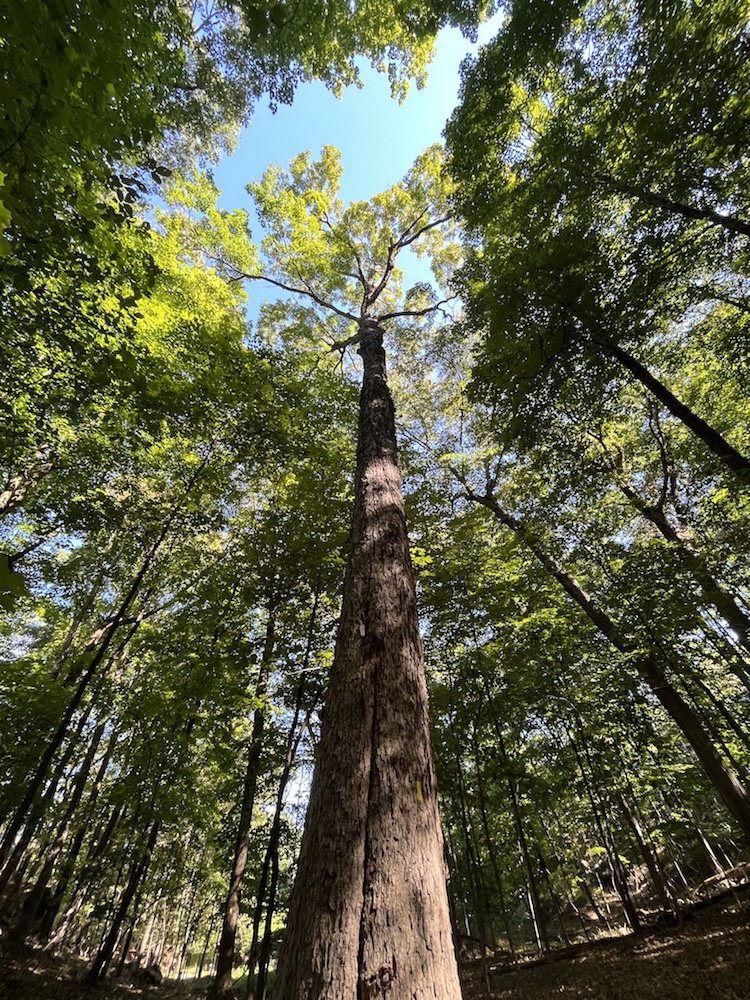Trees, like all plants, need light to survive. The need for light is so strong that it shapes trees, forcing branches and trunks to grow in sometimes odd directions as the leaves reach for the sun. When out in the woods, you may notice some of these differences in growth patterns, which can tell a story about the trees that took root there.
I found this twisted maple while hiking in Massachusetts. Almost like a serpent or a roller coaster, the trunk bows, makes a turn, and then curls back up on itself. All to get past a lower growing hemlock that was blocking the light.

Something happened that opened a gap in the canopy, and the maple took advantage of that disturbance. You can also see that there are no low growing branches on the maple, which is common for trees in dense forests. Growing branches and leaves takes effort, and if there’s no light for the leaves to photosynthesize then the tree won’t put energy into growing them. The leaves on this tree are concentrated at the top, where light is abundant.
A great example of this growth pattern can be found at the Pruyn Sanctuary in Westchester County. I found another maple tree here that had also forgone the effort of growing low-down branches. The canopy of the forest was pretty full and there wasn’t a lot of light reaching the ground, so just like in the first picture, this maple would be wasting energy by growing branches at a lower height.

Unlike the maple in the first picture, this one had a perfect opening in the canopy right above it. This gap is right overhead which allows the maple to grow tall and straight. There was nothing it had to grow around, so the tree didn’t twist. Instead, it raced to the top to get there before something else filled the empty space.
Not all trees grow like this, though. Trees that have established themselves in sunny spots get to reap all the benefits of their location. If you’ve ever seen a tree that’s much larger than those next to it with wide, far-reaching branches, odds are that tree grew by itself in a field or meadow even if there’s a forest around it now.

These snow-covered trees at Hilltop Hanover Farm in Westchester County are growing on the edge of a field, and you can see how they’re shaped differently than the cramped trees in the previous two examples. On the field side there is nothing to block the light, so the trees branch out in a bushier shape. They don’t need to put as much energy into growing up so they can afford to grow out, too. Lower down leaves can absorb just as much light as higher up ones, so the tree makes the effort to produce them.
Access to light is an important factor for forest health. If you want to read more about how light affects tree growth, check out these related blogs:





